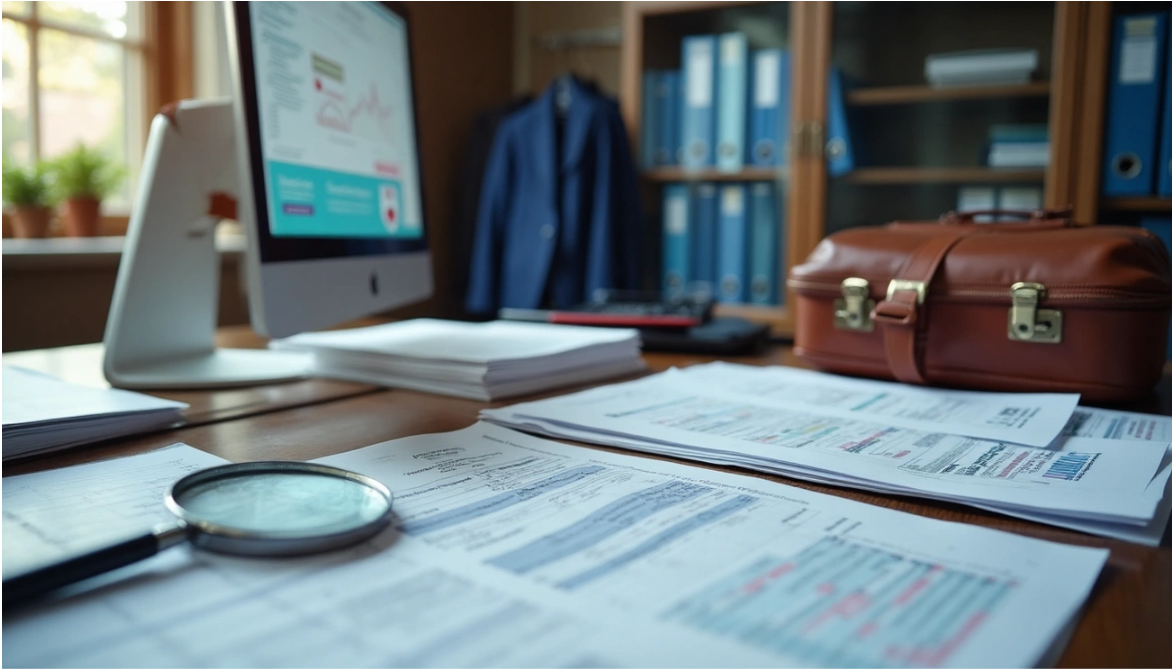Insights into Restaurant Management
What is the importance of accounting to an Edmonton Restaurant and Canada? A restaurant’s profitability is directly proportional to the level of organization present in the establishment’s back office. It is the system that is in charge of handling all of your financial data and making sure that you generate enough money to cover all of your expenses. Understanding this administrative area will help you evaluate the functioning of your organization, even if you do not have a history in accounting.
It is imperative that you are aware of the current state of the restaurant’s finances in order to ensure that you are not making decisions in the dark. In light of the fact that a lack of revenues is responsible for the demise of fifty percent of all firms within the first five years of their existence, having a solid grasp of your own finances can assist you in warding off potentially disastrous complications. You will be able to evaluate the performance of your firm on the market and address the challenges associated with increasing the revenue generated by your company. Before we talk about how accounting is used in your business, let’s first clarify what accounting is.
What is Accounting?
The term “accounting” refers to the process of compiling, categorizing, interpreting, analyzing, and reporting financial information. It is a more advanced form of recording financial transactions than bookkeeping, which just keeps track of a company’s money coming in and going out.
Accounting is also the process of creating financial statements for an organization and delivering them to the organization’s stakeholders. The publication of financial statements including income statements, balance sheets, and cash flow statements is included in this process. Although the process is virtually identical in a lot of other businesses, the restaurant business has some significant variances.
Accounting for restaurants requires compiling, analyzing, and making sense of the financial information provided by eating establishments. This comprises income statements, cash flow, inventory levels, and revenue from the restaurant. The method enables proprietors and managers of restaurants to keep track of all financial transactions and assess the company’s overall performance.
The term “restaurant accountant” refers to an accountant who has developed a specialty in restaurant accounting. They keep an eye on all of the financial activities that take place at the restaurant, including the inventory, cash flow, and income statements.
With the information provided by restaurant accounting, you can more effectively manage your cash flow, estimate your profits, bring your financial books into balance, and plan for the future of your company. Let’s look at the ways in which accounting has an effect on your restaurant in greater depth.
Financial Management
The successful operation of a business depends heavily on sound financial management. If you own a restaurant, you are required to have a system in place for accounting for the salaries of your employees, documenting transactions, reporting total sales, and analyzing your business. If either your accounting system or function is ineffective, such administrative components of your organization will not be controlled properly and will not work effectively.
Accounting allows one to gain access to the financial information that is necessary for the operation of a comprehensive business. Because of this, you are able to take proactive decisions in the business world and increase the profitability of your company.
It is impossible to run a restaurant successfully without having access to data, reports, records, analysis, and precise financial information. You are need to have an understanding of the assets, liabilities, and profits of the organization. Accounting for restaurants enables business owners to understand the larger picture and run their establishments more efficiently: The following are included in it:
- Business strategy.
- Bookkeeping.
- Tax Planning and Filing
- Budget creation.
- Cost of goods sold tracking and management
- Labor cost tracking and management
- Payroll.
- Daily sales reports are being prepared.
- Creating financial statements such as a profit and loss statement and a balance sheet.
Enhanced Understanding of Your Company’s Financial Situation
A more complete picture of a company’s financial health can be obtained from the data kept in its accounting system. You will be able to have a better understanding of the day-to-day operations of your company if you make use of reporting of the restaurant’s financial activities that is done in real time. You will have the ability to identify the fees that are the most expensive as well as the items that are the most popular on the menu. Because of this, you will be able to make decisions that are better informed and implement efforts that are more efficient. In addition to having a business strategy that is well defined, you also maintain accurate records of the most recent events.
Both the profit and loss statement (also known as a P&L statement) and the balance sheet are important financial statements that can be used to get insight into the organization’s current financial health. The profit and loss statement of a restaurant demonstrates how profitable the business has been over a specific time period, but the balance sheet illustrates how much the restaurant is now worth at this moment in time.
A statement of profits and losses provides insight into the restaurant’s current state of financial health. You will be aware of how much money is spent on labor or the creation of menu items, as well as which items are the most and least popular with customers. By presenting your company’s profitability, it enables you to find areas of your organization that are in need of improvement and make the necessary changes. You are able to produce this statement for a variety of time periods, such as monthly or annually, which provides you with the flexibility to make any necessary adjustments and maintain an ongoing growth monitoring system for your business.
Your company’s balance sheet provides a snapshot of its present assets, equity, and liabilities at a given point in time. In contrast to the restaurant’s assets, its liabilities consist of the amounts of money that it owes to various third parties. The amount of equity in a company is determined by deducting its liabilities from its assets and expressing the result as a percentage. If this value is less than zero, it indicates that the obligations that are associated with your restaurant are greater than its assets. If all of your company’s obligations come due at the same time, selling its assets will not be sufficient to cover the cost of those obligations.
Improved Cash Flow Tracking
Because of the use of reliable accounting practices, the owners and managers of restaurants are able to track the flow of cash and preserve accurate records of the transactions that take place. This is a key component in estimating how much money the restaurant produces and how much money it spends, as well as the precise quantity of money that enters and exits the organization at any one time. You may use this information to plan and assign resources to guarantee that specific corporate divisions run smoothly, which will assist ensure that operations run smoothly overall.
Your restaurant’s cash comes from a variety of places, and the statement of cash flows will detail them, as well as the uses to which the cash was put throughout the course of a certain period of time. This statement provides an all-encompassing perspective on the health of your company’s finances because it does not contain any non-cash components. This is due to the fact that the statement does not include any non-cash components. You will also have a better understanding of the contrast between having money on paper and actually having money in your business accounts, which is a point that should not be overlooked. This information is required without question in order for the company to successfully plan and make projections. It gives you the ability to increase revenues while at the same time delivering new products and services that are a better fit for the needs of customers.
Take Control of Your Primary Expenses
One of the most essential key performance indicators (KPIs) that a company may choose to monitor is the prime cost of a restaurant. In addition to the cost of the products that were sold or the inventory, it indicates the total amount that was spent on labor. These are the expenses that have to be paid for in order for the restaurant to continue operating normally and have access to the necessary goods and services. Maintaining command over these costs is absolutely necessary if you want your company to continue to experience sustained financial success.
When it comes to ensuring that your restaurant maintains a good profit margin and keeping track of the daily cash generated by the business, the prime cost should serve as your primary point of reference. Accounting for restaurants enables you to evaluate your primary expenses, which is vital for figuring how much to charge for your services in order to earn a profit. Accounting also enables you to determine whether or not your restaurant is profitable. It is also helpful in assessing how much money you can spend on operating your business without causing it any harm, which is a very important factor. Keeping a careful check on expenses is the first thing that has to be done in order to effectively manage costs.
Inventory Management
Accounting is vital for keeping track of a restaurant’s inventory as well as the prices of the numerous things that are sold there. Restaurants typically sell a wide variety of different commodities. At any given time, you will be able to see the total amount of money spent on obtaining the components, the number of purchase orders that are currently open, and the quantity of components that are already in stock. When a restaurant’s accounting software is merged into its point-of-sale system, the process is totally computerized and streamlined, making the establishment more efficient (POS). This suggests that you will have an easier time estimating the expenses of the items on the menu, gaining insight into the products that create the most income, checking the amount of food waste and portioning, and determining the goods that generate the most revenue. Keeping accurate records of your inventory will help you avoid wasting food, mismanaging your funds, upsetting your clients, and falling prey to theft. These are just some of the potential outcomes of careless management.
Keeping Tabs on the Costs of Running Your Restaurant
Your accounting system will normally provide you with two distinct types of information, both of which can help you keep a closer check on your expenses. It begins by describing the recurring payments that you must make, such as insurance premiums and taxes. Second, it details the expenses you will continue to incur so long as your restaurant is a viable business. This comprises the cost of your food and beverages, the rate at which you charge for labour, and the relationship between these costs and your total revenue. When it comes to limiting the amount of money your business spends, each of these factors is an essential and valuable asset. Accounting enables you to maintain accurate records of the following items, allowing you to keep better track of them and to do so in an organised manner:
The daily amount of money you receive from the sale of your products or services is referred to as your sales. Depending on the type of restaurant you own, this can be broken down into food and beverage sales, as well as categories of specific meals. If you have dependable accounting software that is integrated into your restaurant’s point-of-sale system, generating daily sales data should be a quick and simple task.
Orders The accounting system provides information regarding the overall number of orders placed with your company as well as the number of successfully completed orders. In addition to the amount of money your restaurant earns from sales, you must assess how well it meets the needs of your customers. This is also a good way for evaluating the quantity of inventory needed to ensure the smooth operation of the restaurant.
Payroll refers to the monetary compensation an employer provides to an employee in exchange for the employee’s services. Since paying employees is one of the most significant restaurant operating expenses, you must be able to analyze and control the amount of money you spend on them. Accounting provides this information, which supports you in creating a more efficient budget.
The value of your inventory is not decided exclusively by a physical or manual count, as this is not the only factor. Examining how much profit may be made and how much money can be generated by capitalizing on the inventory is another crucial stage. Accounting for restaurants helps one to determine the amount of stock that is now available and to provide an educated estimate of the profit that may be realized from the sale of that stock.
Conduct an Analysis of How Well Your Company Is Doing.
Not only does the accounting record that you keep show the current financial status of your restaurant, but it also reflects the consequences of the operations that are carried out by your firm. This implies that you will be able to identify places that are functioning well as well as those that require specialized treatments. Additionally, you will be able to recognize locations that are performing well. You can also contrast these places by placing them next to one another. You will be able to evaluate the success of your restaurant and compare it to the performance of other restaurants within the industry if you generate a number of ratios from the accounting data and use them in your analysis. You will also be able to evaluate its performance in relation to that of other restaurants operating within the same sector of the economy. A comparison of the company’s current financial performance to its past accounting data is another method for determining whether or not the business is headed in the right direction. It’s possible that this will help you determine whether or not the organization is heading in the right direction.
Ensure That Your Restaurant Meets All of the Requirements
It is the responsibility of each individual company to ensure that its daily operations are in accordance with all applicable regional laws and tax requirements. You can ensure that all of your restaurant’s financial responsibilities are met on time and paid in full by adhering to proper accounting practices and procedures. This requires complying with legal laws, such as paying income tax, goods and services tax, and sales tax, as well as any other applicable taxes. You will have the ability to control and keep track of the cash flow in your company, which will enable you to guarantee that the money is distributed fairly and efficiently across the organization.
Conclusion
One of the most important factors in establishing your restaurant’s level of success is your ability to keep detailed financial records. It doesn’t matter how big or little your company is, accounting is useful because it can show you where your company is headed. This may be a promising indicator of future success. You are in a position to assess whether or not your business is profitable and, if so, whether any adjustments need to be made to increase profits. If your business is successful, you may be in a position to look into these matters.









 View Our Location
View Our Location





 181 Meadowview Bay, Sherwood Park, AB T8H 1P7, Canada (Online Clients Only)
181 Meadowview Bay, Sherwood Park, AB T8H 1P7, Canada (Online Clients Only)